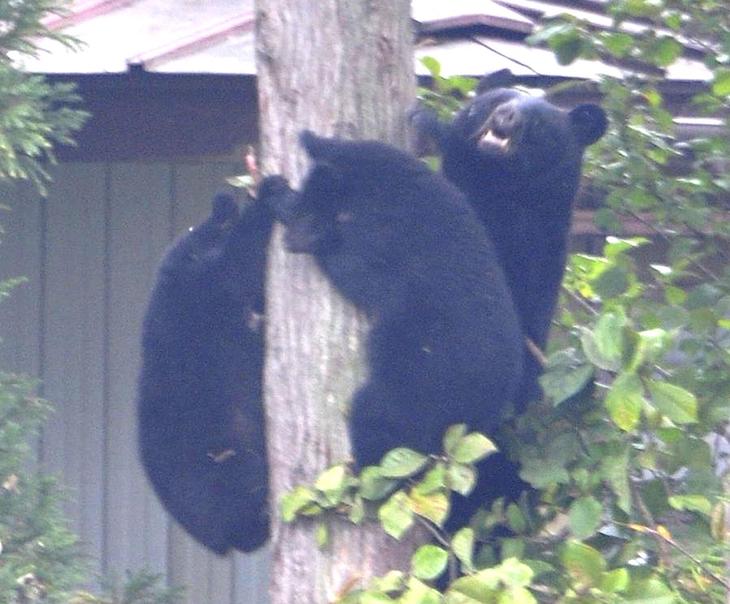In a scenario out of a horror film, or Werner Herzog documentary perhaps, Japan is experiencing a spate of bear attacks, including a series of fatalities. Over the last few years, the number of encounters, attacks and deaths have all surged. This year alone, since April, 200 people have been attacked and six killed. The ongoing grisliness is threatening to seriously impact tourism in certain areas.
Most attacks are in the northern island of Hokkaido, known as ‘Japan’s last frontier’
Some of the stories are the stuff of nightmares, such as when an 81-year-old woman in Iwate was mauled to death inside her own home in July – or the 26-year-old hiker found savaged on a mountain trail in Hokkaido in August. Last month, a bear managed to get inside a nursing home full of vulnerable people in north eastern Japan; another got into a supermarket in Akita. A bus queue, including schoolchildren, was attacked in Kita-Akita. A man had to fend off a bear in his garage in Tomiya.
Most attacks are in the northern island of Hokkaido which is known as ‘Japan’s last frontier’, or in Iwate and Akita in northern Honshu. But the problem is widespread: there have been reports of sightings and attacks in Gunma, Miyagi and even on the fringes of Tokyo (the municipal government keeps a ‘bear map’ to track movements).
The fundamental cause of the surge appears to be declining rural populations. This has led to abandoned farmland and a blurring of the lines between the human and animal domains. Fewer full-time residents also means fewer hunters, so bears are not just increasing in number but becoming emboldened to roam beyond the borders of their previous habitats. Some poor harvests have meant less food on the ground, with the consequent hunger forcing bears to postpone hibernation.
There have also been conservation efforts aimed at boosting the bear population (environmentalists consider bears an ‘umbrella species’ and thus important for biodiversity) which have proved successful. The estimated bear population has increased from around 15,000 in 2012 to 56,000 today (44,000 Asiatic black bears and 12,000 of the more dangerous Ussuri brown bears – found only in Hokkaido.
But if full-time residents are decreasing, tourist numbers have been increasing. This means more people on the hiking trails, many of whom have little knowledge of the dangers of the countryside and no experience of dealing with an ursine menace. The more encounters there are, the less easy it is to spook the bears. There are reports that bears have now become unfazed by such countermeasures as fireworks, or drums.
All of this is a bit of a shock for the Japanese, who have a tendency to sentimentalise and anthropomorphise their animals. Prefectures will employ artists to create loveable little mascots, often ursine such as the ever popular Kumamon, the smiling and friendly black bear created by Kumamoto prefecture to draw visitors to the region.
The Japanese also, as part of the country’s ongoing love affair with itself, treat their countryside as a prelapsarian idyll. Travel documentaries that see minor celebrities wandering around remote areas declaring every view ‘kirei’ (pretty) and every local delicacy ‘oishi’ (delicious) are a TV staple. The grim realities, such as elderly hikers being mauled by half-tonne bears, don’t tend to feature.
It is important not to overstate the problem, though. Bear attacks may be on the rise but your chance of being a victim, indeed of even seeing a bear, is still slim. But it will be hard to reassure the pathologically risk-averse Japanese of that, especially when the gory details are reported on the news, where they can appear as almost a substitute for the violent crime stories that, thankfully, only seldom occur.
What the increase in bear attacks ought to highlight is the pressing need to repopulate the countryside. This won’t be easy as all attempts to date have failed. These have included basically paying people to escape to the country (you get three years’ housing and a salary); or, if you can’t go yourself, you are offered the option of having a portion of your taxes used for your hometown. It’s an ingenious levelling up initiative that the Chancellor Rachel Reeves might be interested in.
The problem is that until a significant number of people make the move, hardly anyone will. At the moment, vast areas of Japan remain pristine but woefully underutilised. There are sizeable houses available for next to nothing, sometimes actually nothing, but in inaccessible areas where the few scattered souls who reside are elderly. It is beautiful but boring. It is hard to imagine why any young person would voluntarily sacrifice the city for the country at present – not least when the regions most in need of renewal are those most menaced by Japan’s bears. Japan’s bear problem is only likely to get worse as the bears continue to encroach on the fewer and fewer people who cling on. If the attacks and the bad publicity continue, the tourists may stop coming and rural flight will only accelerate, which is the very last thing Japan needs.








Comments